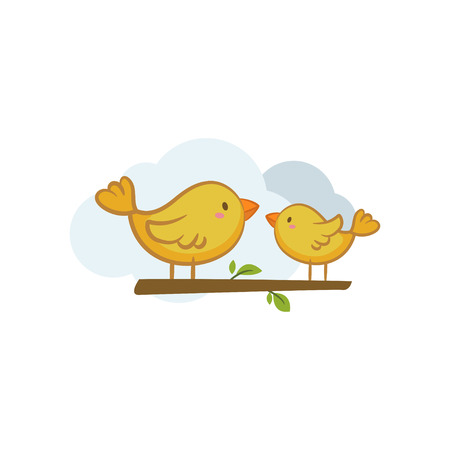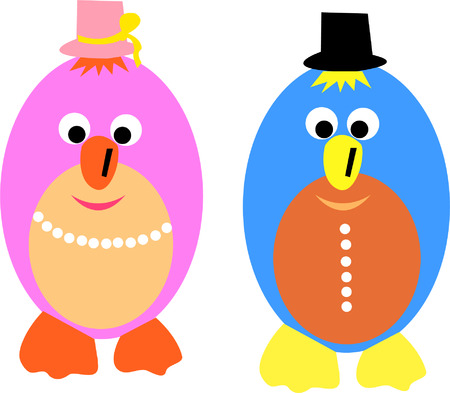Introduction to Keeping Pet Birds in UK Families
Bird-keeping has fluttered its way into the hearts of many British households, becoming a cherished hobby across the country. In the UK, families are increasingly discovering the joys of sharing their homes with feathered companions, especially when it comes to introducing children to the world of pets. Unlike larger animals, birds require relatively less space, making them suitable for both city flats and countryside cottages alike. Their vibrant colours, cheerful songs, and engaging personalities offer endless fascination for young minds. For parents, keeping pet birds also presents an excellent opportunity to teach children responsibility, empathy, and gentle care. Whether you’re living in bustling London or a quiet village in Yorkshire, welcoming a bird into your family can provide companionship and joy for years to come. In this guide, we’ll explore why birds make ideal beginner pets for children in the UK and how they can enrich your family’s daily life.
2. Things to Consider Before Bringing a Pet Bird Home
Before introducing a pet bird into your family, especially in the UK, it’s essential to assess several factors to ensure both you and your feathered friend enjoy a happy and healthy life together. Here’s what British families should keep in mind:
Lifestyle Compatibility
Birds are sociable creatures that require daily attention, interaction, and stimulation. Consider your familys routine: do you have time for play, training, and cleaning? If your household is often empty during the day, some birds may become lonely or develop behavioural issues.
Housing Arrangements & Rental Policies
Not all UK homes are bird-friendly, particularly if you’re renting. Many landlords have strict pet policies. Always check your tenancy agreement before committing. Below is a quick overview of housing types and typical pet bird restrictions:
| Housing Type | Common Pet Bird Restrictions |
|---|---|
| Private Ownership | Few restrictions; check local council noise regulations |
| Council Housing | May require written permission from local authority |
| Rented Accommodation | Often restricted; landlord approval usually needed |
Legal Regulations in the UK
The UK has laws designed to protect both pets and wildlife. The Animal Welfare Act 2006 mandates that owners meet their pets’ welfare needs—this includes diet, environment, and enrichment. Some species (such as certain parrots) may also be regulated under CITES or the Wildlife and Countryside Act. Always purchase birds from reputable breeders or rescue centres that comply with UK standards.
Noise & Neighbour Considerations
While budgies and canaries are relatively quiet, larger birds may cause noise disturbances. In semi-detached or terraced houses—common across Britain—be mindful of neighbours and local council noise complaints policies.
Summary Table: Key Points to Check Before Choosing a Pet Bird
| Consideration | Why It Matters in the UK |
|---|---|
| Lifestyle & Time Commitment | Prevents neglect and ensures a healthy pet relationship |
| Rental Agreements & Housing Rules | Avoids disputes with landlords or councils |
| Legal Requirements & Species Restrictions | Keeps you compliant with UK law and protects native wildlife |
Taking these UK-specific points into account will help you make an informed decision when choosing the best beginner pet bird for your children.

3. Top Beginner-Friendly Pet Bird Species for Children
If you’re considering welcoming a feathered friend into your family, it’s important to choose a species that matches both your child’s age and your household’s lifestyle. Here are some of the most popular and easy-going pet birds suitable for young keepers in the UK:
Budgerigar (Budgie)
Buddies, as they’re affectionately known, are perhaps Britain’s favourite starter bird. Budgies are small, sociable, and incredibly intelligent, making them ideal for families with children. They can learn to mimic words, enjoy gentle handling, and thrive on interaction. With their playful nature and relatively simple care requirements, budgies are a brilliant choice for beginners.
Cockatiel
Cockatiels are adored for their gentle disposition and charming personalities. Slightly larger than budgies, they’re still manageable for children and tend to be very affectionate. Cockatiels enjoy spending time outside their cage (under supervision) and can be taught to perform tricks or whistle tunes. Regular socialisation is key to keeping these birds happy.
Canary
For families seeking a bird that’s more about watching than handling, canaries are perfect. Known for their melodious singing and cheerful nature, canaries require less direct interaction but still bring plenty of joy. They’re best suited to children who enjoy observing pets rather than cuddling them.
Zebra Finch
Zebra finches are lively little birds that do well in pairs or groups. Their energetic antics and soft chirping add life to any home without demanding too much attention from young owners. Finches prefer not to be handled frequently, so they’re an excellent option for kids who like to watch rather than touch.
Key Considerations
Regardless of which species you choose, always make sure the bird’s needs align with your family’s schedule and living space. Each of these beginner-friendly birds has its own unique personality traits and care requirements—budgies crave interaction, cockatiels need companionship, canaries love to sing, and finches thrive in pairs. By selecting the right pet bird for your child, you’ll help nurture a lifelong respect for animals and create treasured memories together.
4. Caring for Pet Birds: British Climate and Daily Routines
The UK’s distinctive weather and daylight cycles present unique challenges and opportunities for caring for pet birds, especially for families with children. Understanding how the British climate influences your feathered friend’s wellbeing is key to keeping them healthy, comfortable, and chirpy all year round.
How the British Weather Affects Pet Birds
Unlike tropical climates where many pet bird species originate, the UK experiences cool temperatures, frequent rain, and fluctuating daylight hours. These conditions can impact a bird’s mood, health, and behaviour—especially for beginners who may not know what to expect.
Common Climate Considerations
| Climate Factor | Potential Impact on Birds | Practical Tips |
|---|---|---|
| Cold Temperatures | Risk of chills or respiratory issues | Keep cages away from draughts; use cage covers at night; maintain indoor temperatures around 18-22°C |
| Damp Weather | Mould growth in cages; wet feathers | Clean cages regularly; ensure good ventilation without exposing birds to cold air; provide dry perches and bedding |
| Short Winter Days | Lethargy or changes in sleep patterns | Use full-spectrum lights to mimic daylight hours (10-12 hours); keep routines consistent year-round |
| Long Summer Days | Poor sleep if exposed to too much light | Cover cages at dusk; maintain a calm environment during late evenings |
Establishing Healthy Daily Routines for UK Families
A predictable daily schedule helps pet birds feel secure—something especially important for children learning to care for their new companion. Aim to feed, clean, and interact with your bird at similar times each day. During school holidays or weekends, involve children in simple tasks like changing water or offering fresh fruit.
Sample Daily Routine for Beginner Pet Birds in the UK
| Time of Day | Activity |
|---|---|
| Morning (7-9am) | Uncover cage, fresh food & water, gentle interaction or talk time |
| Midday (12-2pm) | Cage spot-cleaning, offer safe toys or supervised out-of-cage time (if appropriate) |
| Afternoon (4-6pm) | Sociable playtime with family members, check perch and bedding dryness (especially after rain) |
| Evening (7-8pm) | Cage cover goes on as it gets dark; quiet winding-down period before sleep |
A Final Thought on Wellbeing Year-Round
No matter the season, maintaining a stable indoor environment and involving children in daily care routines will ensure your beginner pet bird thrives in the great British indoors. By being mindful of local weather quirks and daylight shifts, you’ll set your family—and your feathered friend—up for a happy life together.
5. Pet Bird Safety and Child-Friendly Tips
When introducing a pet bird to your family, ensuring a safe environment is absolutely essential—both for your children and their new feathered friend. Birds, especially beginner-friendly varieties like budgies and cockatiels, are small and delicate, so it’s important to create a space where accidental injuries are minimised and both parties can thrive together.
Setting Up a Safe Home for Your Pet Bird
Start by placing the birdcage in a quiet but social spot, away from direct draughts, windows, and kitchens (where fumes can be harmful). Make sure the cage bars are appropriately spaced so little heads or wings cannot get stuck, and always secure doors to prevent any great escapes! Use non-toxic cleaning products around the cage and avoid decorative items that could pose choking hazards.
Childproofing Around Birds
Curious hands sometimes forget to be gentle, so supervise all interactions between young children and birds. Teach children not to poke fingers through the cage or make sudden movements that might frighten their companion. Remind them never to feed birds anything without adult guidance—some common foods like chocolate and avocado are actually toxic to birds.
Teaching Responsible Interaction
Encourage children to speak softly near the bird and show them how to offer treats with an open palm. Let them help with daily routines such as changing water or tidying up seed trays under close supervision. Reinforcing positive behaviours will help foster respect for animals from an early age.
Supervision Is Key
Even the friendliest birds can become stressed if handled too much or too roughly. Always supervise handling sessions, keeping them short at first while everyone gets used to each other. With gentle encouragement and clear boundaries, children will learn how to build trust with their pet bird—a skill that will serve them well throughout their lives.
By prioritising safety and teaching responsible interaction, you’ll ensure that your home is a happy haven for both children and their delightful new avian companion.
6. Where to Adopt or Buy Pet Birds Responsibly in the UK
When welcoming a new feathered friend into your family, it’s essential to source your pet bird from a reputable and ethical provider. In the UK, there are several options for adopting or purchasing beginner-friendly birds, but not all are created equal. Prioritising animal welfare and responsible practices ensures you get a healthy, well-adjusted companion while supporting good standards in the pet industry.
Rescue Centres and Bird Sanctuaries
Many children’s first pets come from rescue centres or sanctuaries, where birds in need of loving homes await adoption. The RSPCA, Birdline UK, and local avian rescues often have budgies, cockatiels, and other small birds looking for families. Adopting from a rescue not only gives a second chance to an animal but also helps teach children about compassion and responsibility.
Reputable British Breeders
If you prefer to buy a young bird, always research breeders thoroughly. Look for those who are registered with national avian societies like the Parrot Society UK or local bird clubs, as they tend to uphold high welfare standards. Responsible breeders will be happy to answer questions, let you see the birds’ living conditions, and provide details about their care routines. Avoid breeders who sell multiple species indiscriminately or seem evasive about their practices.
Trusted Pet Shops
While some large pet shop chains do sell birds, smaller independent shops with experienced staff are often better equipped to advise first-time owners. Ask whether the shop sources birds from ethical breeders and check that cages are clean, spacious, and enriched with toys. Staff should be knowledgeable about bird care and willing to give guidance tailored to your family’s needs.
Why Ethical Sourcing Matters
Choosing a reputable source isn’t just about getting a friendly pet—it’s crucial for animal welfare. Birds bred in poor conditions may suffer health or behavioural issues, while wild-caught birds face unnecessary stress and contribute to declining populations. Always ask questions about the bird’s origin, health checks, and socialisation history before making a decision.
Top Tips for Responsible Adoption or Purchase
- Visit in person whenever possible to assess cleanliness and bird wellbeing
- Avoid online-only sellers or unverified ads on classified sites
- Request documentation of the bird’s age, breed, and any veterinary records
- Be wary of “bargain” prices that could signal poor breeding or illegal trade
Sourcing your child’s first pet bird responsibly is one of the best ways to ensure a positive experience for both your family and your new avian companion—helping nurture kindhearted young animal lovers here in the UK.
7. Conclusion: Making Bird Ownership Rewarding for Young Families
Welcoming a pet bird into your family is more than just bringing home a new companion—it’s an opportunity to enrich your children’s lives with valuable lessons in empathy, responsibility, and animal care. Beginner-friendly birds such as budgies, cockatiels, and zebra finches are not only well-suited to the UK climate and lifestyle, but they also offer gentle temperaments that make them perfect for youngsters. Watching your child develop a bond with their feathered friend can be incredibly rewarding, fostering patience and curiosity as they learn about avian behaviours and needs.
Bird-keeping doesn’t require a large garden or extensive resources—just a cosy corner, the right cage, and some dedication. These small birds brighten up family routines with their cheerful chirps and playful antics, creating shared moments of joy and laughter. Involving children in daily care tasks like feeding, cleaning, and training helps build confidence and teamwork while teaching respect for living creatures.
If you’re considering embarking on this adventure, remember that the key to success lies in research and preparation. Choose a species that matches your household’s energy levels and time commitments, invest in proper equipment, and don’t hesitate to consult reputable breeders or local avian vets for guidance. With the right approach, bird ownership can be a truly fulfilling experience—one that brings families together and creates lasting memories. Give it a go; you might find that a little pair of wings makes your house feel even more like home!


